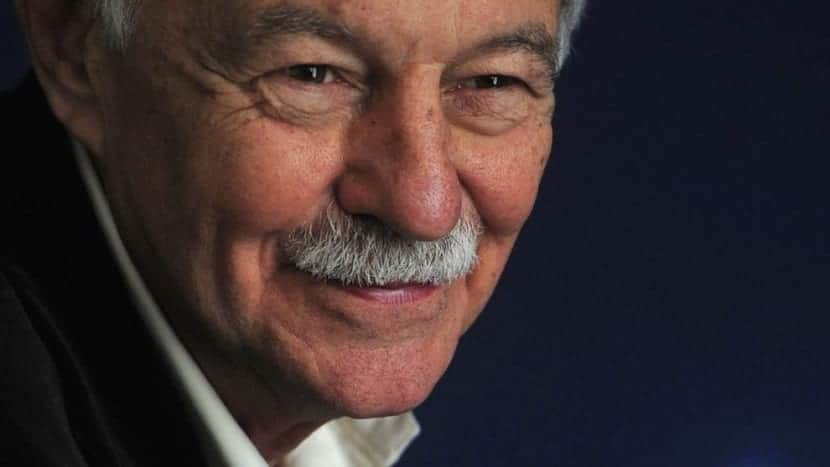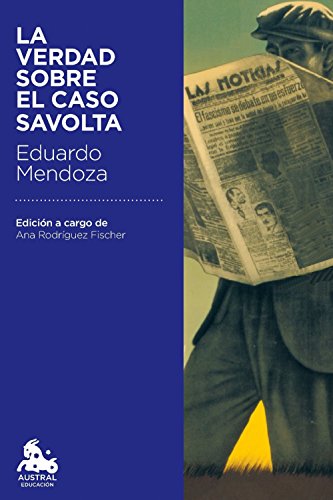
Eduardo Mendoza published his book "The truth about the Savolta case" in 1975. This book can be considered largely as the starting point of the current narrative. In this detective novel, without renouncing the use of experimental techniques, Mendoza offers an argument that captures the reader's attention.
If you want to know a little more about what this book is about, keep reading with us this short summary about "The truth about the Savolta case"by Eduardo Mendoza. If, on the other hand, you plan to read it soon, you better stop reading here. Notice of possible spoilers!
Most important events in the book

"The truth about the Savolta case" is a novel of intrigue in which the asocial and political environment of Barcelona between 1917 and 1919 (What a coincidence with today!). The work, which focuses its interest on the plot, also includes structural and stylistic innovations.
Next, we are going to briefly summarize what is happening in each differential part of the book.
Statement from Javier Miranda
Although the main narrator in this novel is Javier Miranda, a witness to the events, there are also documents provided in a judicial process. The narrator's statement before a judge in New York in 1927, whose shorthand notes are reproduced, provides vital information.
The murder of Savolta
Paul-André Lepprince is a Frenchman of mysterious origin who becomes engaged to Enric Savolta's daughter and enters their arms factories, where he plans the illegal sale of weapons to the Germans during the First World War. Soon after, Enric Savolta will die in an attack accused of terrorists from labor movements.
Maria Coral
In reality, Lepprince was the one who ordered Savolta's assassination, out of fear of being discovered and because he was eager to control his company. Javier Miranda, who deeply admires Paul-André Lepprince and is unaware of his criminal activities, will also be his victim: Lepprince asks him to marry María Coral, a showgirl who had previously been his lover to give her a dignified social position; it is then when she discovers the truth to him in a discussion that is narrated in a brief part of the book.
Death of Lepprince
Lepprince had killed and betrayed by the Savolta company, but the end of the war precipitated the bankruptcy of the arms factory. After attempting a failed political career, Lepprince mysteriously dies.
Epílogo
When Lepprince has already died, Commissioner Vázquez tells Javier Miranda of his crimes. Shortly after, a letter from Lepprince reaches Miranda in which he informs her that he has taken out life insurance so that his wife and daughter can collect it after a while, so as not to arouse suspicion. After a few years, Miranda tries to manage that charge. The novel ends with a letter of thanks from María Rosa Savolta, Lepprince's widow.
The summary of The truth about the Savolta case chapter by chapter
The story of The truth about the Savolta case by Eduardo Mendoza can be clearly divided into two parts, and each of them in several chapters where events take place that, as a reader, you must remember throughout the entire story.
Therefore, we are going to make you a chapter by chapter summary so that you know where all the above that we have mentioned takes place.
Chapters of the first part
The first part is made up of five chapters. Each of them is important in itself, although if we had to stick with one, we would say that the first is the main one. This is because it is where we are introduced to the characters and the scenarios where each one is. Of course, I recommend that you have some paper on hand to write them down since there are quite a lot of them and it can be a bit confusing.
In chapter 1, in addition to meeting the characters, you will also have some references and sequences that, at that moment, you will not connect, or even think that they make sense. Everything is very confusing and mixes past with present.
In general, the summary of this chapter would be brief: Due to an article that Lepprince, the director of the Savolta company, reads in The Voice of Justice, he comes into contact with a man. He does so through the Cortabanyes law firm, which is related to the Savolta company, and where Javier Miranda works. There they find out that there is a threat of strike in the company and decide to hire two thugs to give an example to the leaders.
In addition, there is a New Year's Eve party, and a jump in which we see an affidavit with the first version of the events.
Chapter 2 is the shortest, and only deals with two topics: on the one hand, a second interrogation of Javier Miranda; on the other, a sequence from the character's past in which we see what his work was like, the relationship with "Pajarito", with Teresa and Pajarito's strange death.
The next chapter tells us again about the past, about how Javier Miranda became a "friend" of the Savolta manager, the close friendship he achieved in such a short time ... And, of course, it focuses on the end of the year party, when the creator and chief director of Savolta is shot dead at his own party and in front of everyone there .
The penultimate chapter, four, offers us something more logic because, although we will have separate sequences from the main story, it follows the plot of what happens after the death of the businessman, how Lepprince, the manager friend of Miranda, arrives at the dome of power, the projects it has, and the different actions it carries out to ensure that no one is going to take it down from that place.
Finally, the fifth chapter talks about the police investigation, how he closely follows both Lepprince and Miranda, and the situation of these two characters: one at the top, and the other going through a rather dire situation.
Chapters of the second part
The second part of this story can also be divided into two blocks, on the one hand, the first five chapters; and on the other, the last five.
In the first five chapters there are almost three stories that alternate and that tell the story of three characters: first, Javier Miranda and how he married María Coral (in addition to everything that happens); the second, a party where the Lepprince live and how he has to deal with problems in his company (which is bankrupt) and with the shareholders (one of them very important); and the third, which takes us back to the past, telling the story of a witness who witnesses Pajarito's death, clarifying many points from the previous part.
Finally, the final chapters narrate in a linear way everything that happens with the characters. It is a way of connecting the dots and in each one the characters are coming to an end, some with tragic moments, and others not so much.
The characters that appear in The truth about the Savolta case
Now that you know the chapter by chapter summary of what happens in the history of Eduardo Mendoza, we do not want to leave you without meeting the main protagonists. However, we are not going to focus on characters (which after all you have already seen), but rather on the social classes that are represented throughout the chapters. Keep in mind that we are talking about a Barcelona where there are several social levels.
So, you have:
The gentry
They are those characters with great social status, rich, powerful ... In this case, the characters in The Truth about the Savolta case who would enter this class are the shareholders and managers, for example himself Savolta, Claudedeu, Pere Parells ... For this, manipulations, doing things without giving them any scruples (even when they know that what they are doing is wrong), etc. it is usual.
But there are not only men, also the couples of the characters are influenced by this social level, although, in this case, more like a «vase woman», that is, they bend to what the men say and only care about "Pretend" in society.
Middle class
As for the middle class, the majority is represented by the officials, or people who take care of administrative and judicial tasks…, but at the same time there are also doubts about whether what they are doing is right or not. For example, the lawyer Cortabanyes or the police who study the case.
The salaried social class
In the novel, this collective becomes only a witness of what happens throughout history, and that they fear that it may splash them in a negative way. As you would say "pay the duck."
The proletariat
Let's say that it is the lowest level of the chain of social status, and they are characters that, although they do not develop (because the author focuses on the upper bourgeoisie), there are some that stand out a bit.
Lumpen proletariat
Finally, in this category we could say that there are those characters that have an even lower status than the previous ones, which are, in some way, disowned for what they do, whether it's prostituting, being bullies, etc.